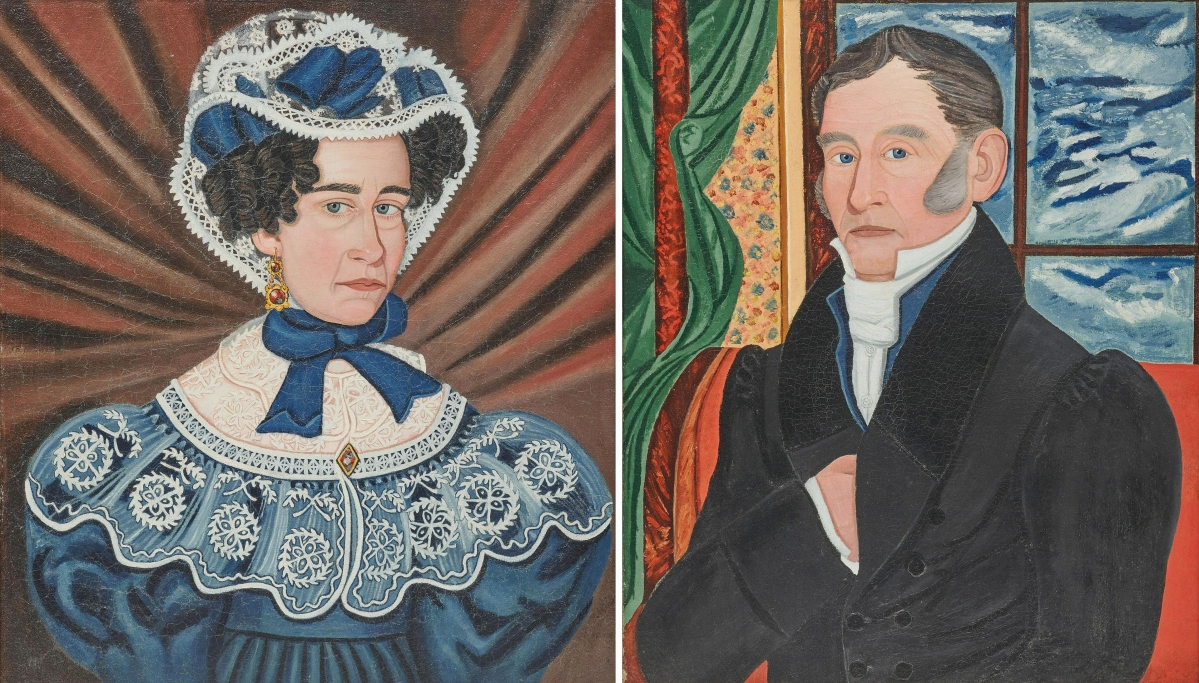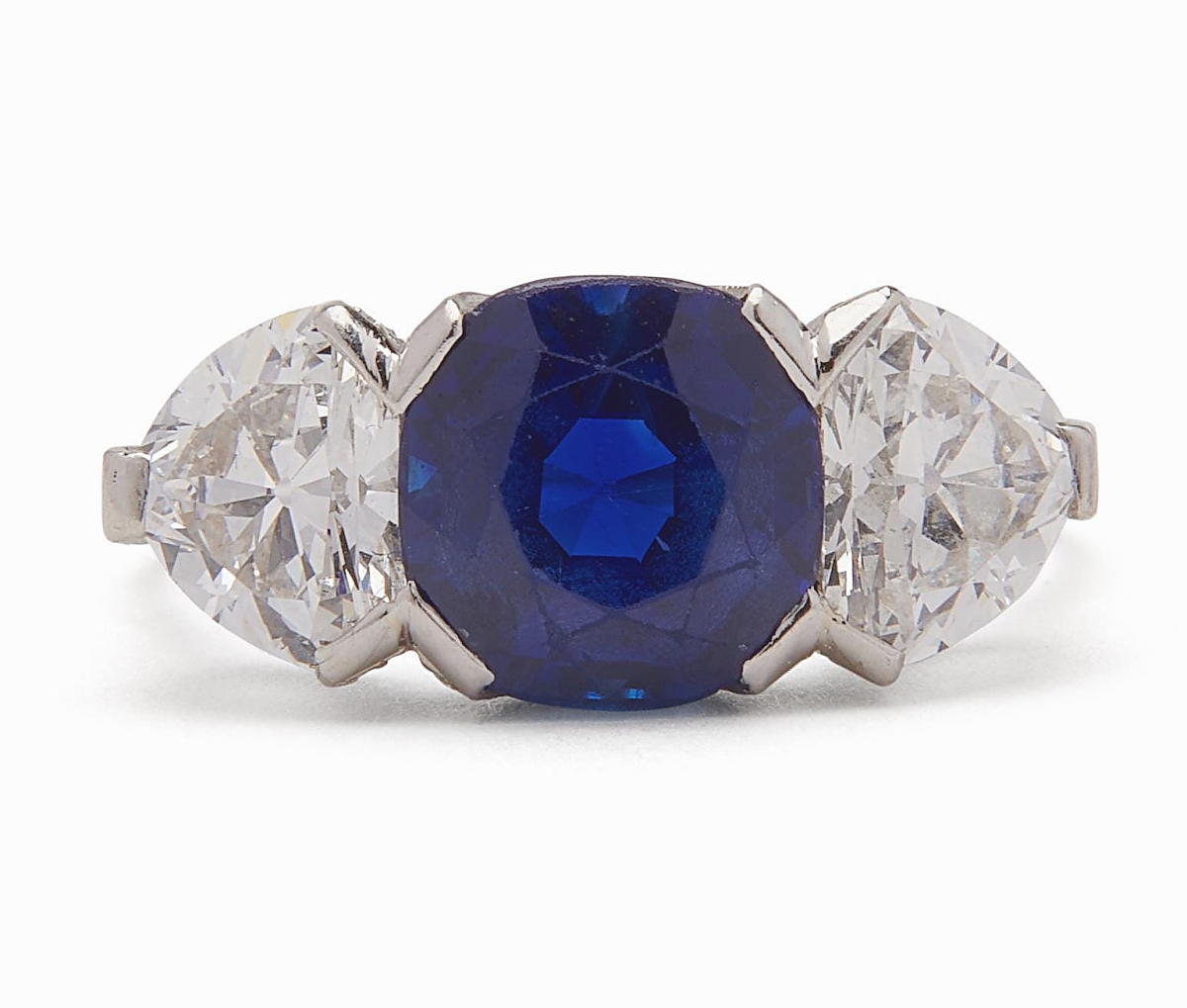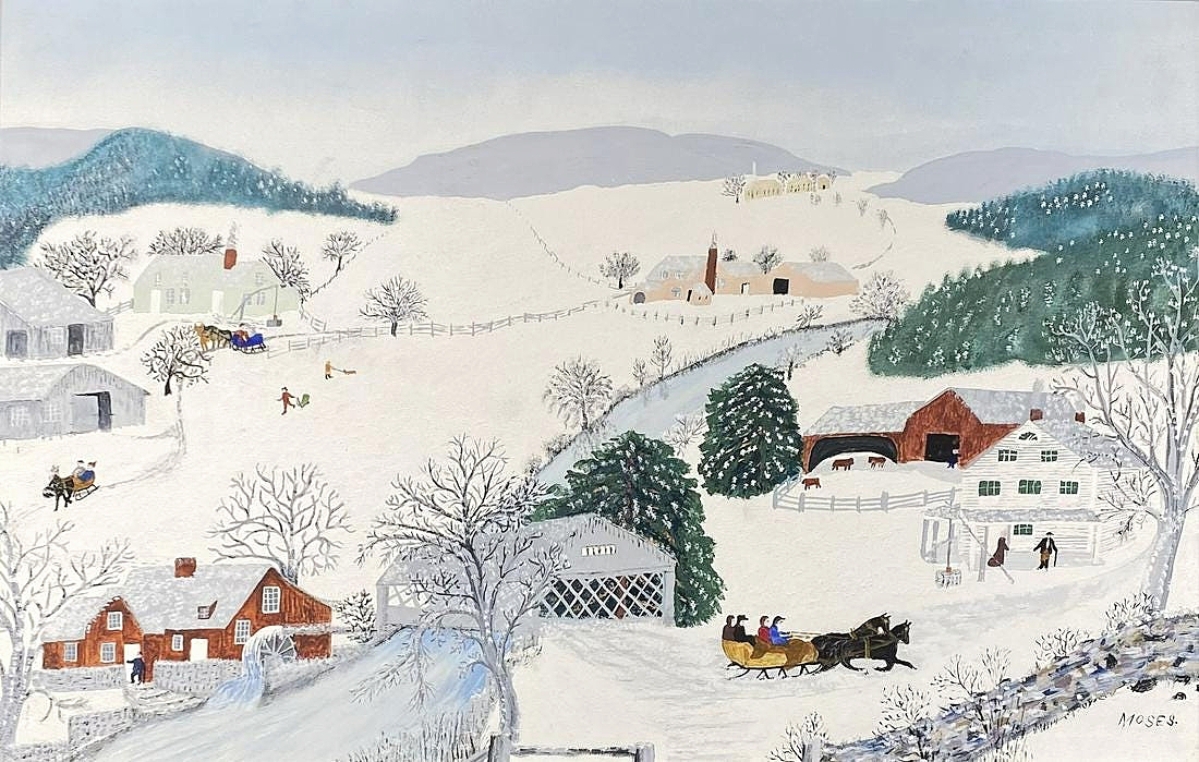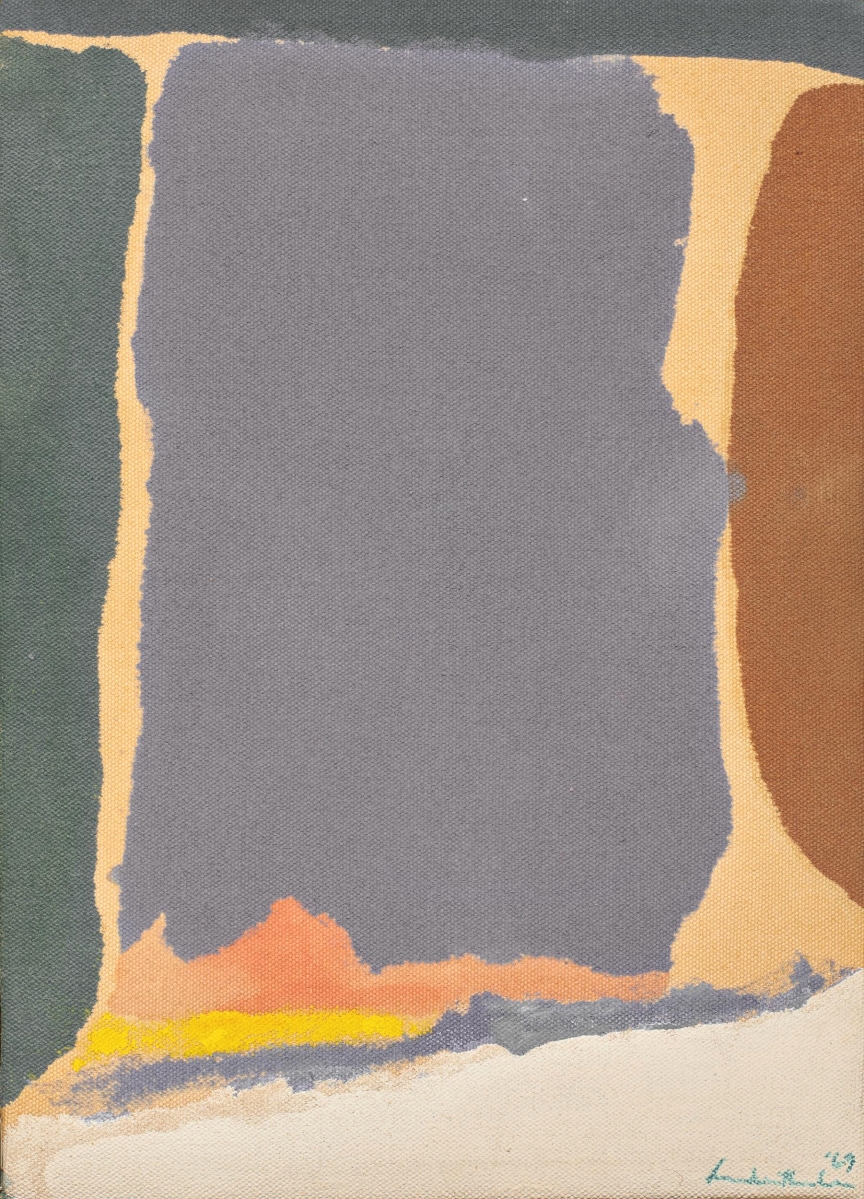
Clearly the star of the sale, this pair of portraits realized $406,000. The pair had impeccable provenance having first been discovered in Philadelphia in 1959, then being sold by Edith Halpert’s Downtown Gallery, becoming part of the Garbisch collection, and later sold by David Schorsch. Schorsch, who sold the portraits to the consigner in 1997 for $180,000, tried to buy them back but was the underbidder.
Review by Rick Russack, Additional Photos Courtesy Grogan & Co.
BOSTON – At Grogan & Company’s May 2 auction, the top price among the fine art offerings, and also the highest price of the day, was earned by a spectacular pair of Nineteenth Century American school portraits that finished at $406,000. The top price among the jewelry offerings was a Kashmir sapphire and diamond ring that finished at $287,500; the leader among the American decorative arts offerings was a Boston block-front dressing table that finished at $16,250; and topping the Asian offerings was a Chinese blanc-de-chine vase that brought $25,000. And that is not to mention the $20,000 watch or the silver and the rugs. No wonder Michael Grogan could call it “our best sale yet.” The sale was 94 percent sold with jewelry averaging $8,600 per lot and paintings averaging $11,000 per lot. A total of 45 percent of the lots sold above high estimates. Five lots sold for more than $100,000, 70 more sold for five figures and the total was just $30,000 shy of $4 million.
Several of the items in the sale, including the portraits and the American furniture, came from the Boston home of collectors who assembled their collections over an extended period, buying selectively from the leading dealers of the day, so provenance was noteworthy. The pair of American school portraits easily topped the day, selling at $406,000 against an estimate of $100,000. The pair had impeccable provenance, having first been discovered in Philadelphia in 1959, then being sold by Edith Halpert’s Downtown Gallery, becoming part of the Garbisch collection, and later sold by Americana dealer David Schorsch. Schorsch, who sold the portraits to the consigner in 1997 for $180,000, tried to buy them back, but was the underbidder. He said, “I sold them just about the time I moved into my Woodbury, Conn., gallery. Prior to that I had been selling privately. I had not met this couple prior to the time they came to the gallery, and they very much liked the pair of portraits. They wound up buying the paintings as well as the piece of furniture I had displayed them over. And I thought to myself, I should have opened a retail gallery long ago. They were living in Connecticut at the time and later moved to Boston. They obviously had very good taste and I was able to buy the miniature chest, the tavern table, and some other things they had owned at Grogan’s sale. The paintings were exceptional, and I would have loved to own them again, but it just didn’t happen this time.”

The top three jewelry lots in the sale were platinum, sapphire and diamond rings of unusual color, exceptional quality and provenance. This one, a circa 1910 ring with a rare 4.31-carat Kashmir sapphire, was the top priced piece of jewelry, finishing at $287,500. It was accompanied by an AGL report certifying the stone.
Georgina Winthrop, fine arts director, pointed out a small, untitled acrylic painting by Helen Frankenthaler (1928-2011) as being one of her favorite paintings in the offering. It was a gift from the artist and was inscribed “For Claude and Angie with love, Helen, 22 September, ’69.” It had been included in an exhibition of Frankenthaler’s works sponsored by the US International Communications Agency in 1978 and had remained in the family. Winthrop wrote, “Frankenthaler’s nuanced colorwork and gestural blending are enhanced by her confident employment of the raw canvas as both a support and a color itself.” The painting sold for $102,000. Along with this and the pair of portraits, a third painting earned more than $100,000. It was a large work by Grandma Moses (1860-1961), “Over the River to Grandma’s House on Thanksgiving Day.” It had been exhibited at least four times and sold for $150,000. There were two smaller works by the artist; each sold for $31,250.
Winthrop also pointed out a 1946 untitled watercolor, ink and charcoal by Lyonel Feininger (1871-1956), with an interesting story. The watercolor had been loaned by the Feiningers for a 1951 exhibition at the Cleveland Museum of Art. The family of the consignor had so liked the work, that they purchased it from the artist at the conclusion of the show and it remained in the family. It sold for $25,000.
A few days after the sale, Winthrop commented that many paintings had been sold to private buyers. “I think that’s an indication that online buyers are watching our sales. At different points during the sale, we had more than 1,500 people watching online. I think Covid has leveled the playing field, and more potential buyers are watching online and are willing to buy sight-unseen.”

Frequently exhibited and with impeccable provenance, “Over the River to Grandma’s House on Thanksgiving Day” by Grandma Moses was one the paintings selling for more than $100,000. It was signed, had the artist’s inventory label and finished at $150,000.
Jewelry is always a major component of Grogan & Company sales, and the department is headed by daughter and vice president Lucy Grogan Edwards. The top three jewelry lots were platinum, sapphire and diamond rings of unusual color, exceptional quality and provenance. A circa 1910 ring with a 4.31-carat Kashmir sapphire, flanked by two rounded trillion-cut diamonds, 1.81 total carat weight, led the group, finishing at $287,500. The accompanying AGL report certified the stone as originating in Kashmir and that it had not been subject to heat. Selling for $125,000 was an unusual large orange sapphire ring with a stone weighing 19.10 carats, flanked by diamonds. Its AGL report certified it as originating in Ceylon, and not having been subjected to heat. The last of the three sapphire rings incorporated a 9.75-carat purple sapphire, flanked by four baguette-cut diamonds and 14 full cut diamonds. This ring sold far over the estimate, finishing at $87,500. Edwards said she was pleasantly surprised at that number. “Purple sapphires can be mistaken for amethysts so sometimes they do not show the value as the other colors do, so we estimated it conservatively. But this one was so special and that was appreciated by the buyers.” All three had du Pont family provenance.
High quality encouraged bidders on other jewelry lots as well. Three brooches did especially well, selling to the same buyer. A signed Raymond Yard circa 1960 platinum, 18K gold, enamel and gem-set house brooch sold for $39,000. The house was set with diamonds, the roof was polished gold, the chimney included step-cut rubies, and there was more. The catalog stated that Yard introduced the house brooch in 1932 and over the years they became larger and more elaborate. By the 1960s, buyers could commission brooches depicting their own home. Another pleasant surprise was a signed Cartier platinum, sapphire, diamond, onyx and ruby parrot brooch. It sold for $37,500. The third one was another of those surprises that sometimes happen at auctions. An 18K gold, diamond and enamel brooch in the form of a dancing, masked jester sold for $30,000, far over the estimate. Edwards said, “I was watching the presale bids adding up on the jester, and I kept looking at it to see if I had missed something. It was a lovely, unusual piece and two bidders were determined to have it. So, it ended up where it did.”

Grogan’s fine arts director, Georgina Winthrop, indicated that this small, untitled acrylic painting by Helen Frankenthaler was one of her favorite works in the sale. It had been a gift from the artist, so inscribed, and it sold for $102,000.
She also commented on a signed and numbered J.E. Caldwell & Company circa 1920 natural graduated pearl necklace that sold for $40,625. The accompanying GIA report stated that 70 of the pearls were natural and that one was cultured. The clasp was set with a 1.10-carat bezel-cut diamond. “The market for natural pearls has been soft lately, so I estimated it conservatively. But this necklace was special, the pearls were large, the du Pont family provenance was solid, and it did better than I thought it would. It’s always nice to see buyers responding to quality.”
From the same consignor as the pair of portraits that did well came a selection of American furniture. An Aaron Willard tall case clock brought $10,000, and an Eighteenth Century mahogany Boston block-front kneehole dressing table brought $16,250. An oval Eighteenth Century maple tavern table brought $11,250, going back to David Schorsch, who had sold it years ago.
Michael Grogan’s comment after the sale was simple, “What can I say? The numbers tell the story. It was our best sale ever, almost $4 million, and we had a high sell-through rate. The merchandise in all categories was first-class and buyers recognized that.”
All prices include the buyer’s premium as stated by the auction house. For information, 617-720-2020 or www.groganco.com.































